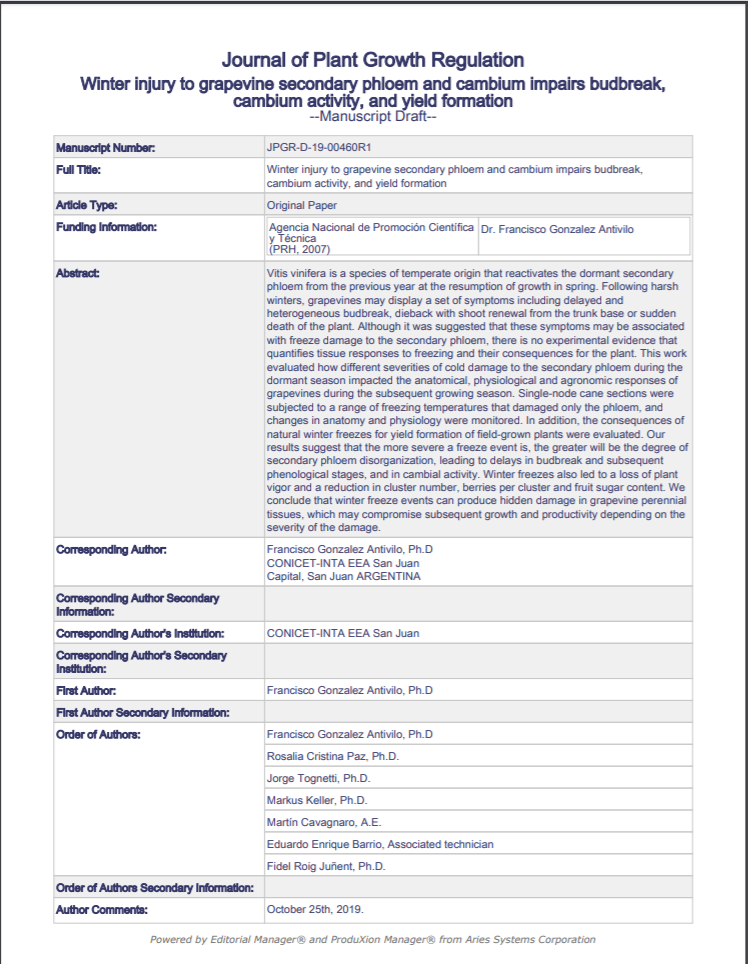Winter Injury to Grapevine Secondary Phloem and Cambium Impairs Budbreak, Cambium Activity, and Yield Formation

Fecha
2019Autor
Roig Junent, Fidel [Univ Mayor, Fac Ciencias, Hemera Ctr Observac Tierra, Santiago, Chile]
González Antivilo, Francisco
Cristina Paz, Rosalia
Tognetti, Jorge
Keller, Markus
Cavagnaro, Martin
Enrique Barrio, Eduardo
Ubicación geográfica
Notas
HERRAMIENTAS
Acceda a títulos restringidos
¿Cómo descargar?Resumen
Vitis vinifera is a species of temperate origin that reactivates the dormant secondary phloem from the previous year at the resumption of growth in spring. Following harsh winters, grapevines may display a set of symptoms including delayed and heterogeneous budbreak, dieback with shoot renewal from the trunk base or sudden death of the plant. Although it was suggested that these symptoms may be associated with freeze damage to the secondary phloem, there is no experimental evidence that quantifies tissue responses to freezing and their consequences for the plant. This work evaluated how different severities of cold damage to the secondary phloem during the dormant season impacted the anatomical, physiological, and agronomic responses of grapevines during the subsequent growing season. Single-node cane sections were subjected to a range of freezing temperatures that damaged only the phloem, and changes in anatomy and physiology were monitored. In addition, the consequences of natural winter freezes for yield formation of field-grown plants were evaluated. Our results suggest that the more severe a freeze event is, the greater will be the degree of secondary phloem disorganization, leading to delays in budbreak and subsequent phenological stages, and in cambial activity. Winter freezes also led to a loss of plant vigor and a reduction in cluster number, berries per cluster, and fruit sugar content. We conclude that winter freeze events can produce hidden damage in grapevine perennial tissues, which may compromise subsequent growth and productivity depending on the severity of the damage.
Coleccion/es a la/s que pertenece:
Si usted es autor(a) de este documento y NO desea que su publicación tenga acceso público en este repositorio, por favor complete el formulario aquí.